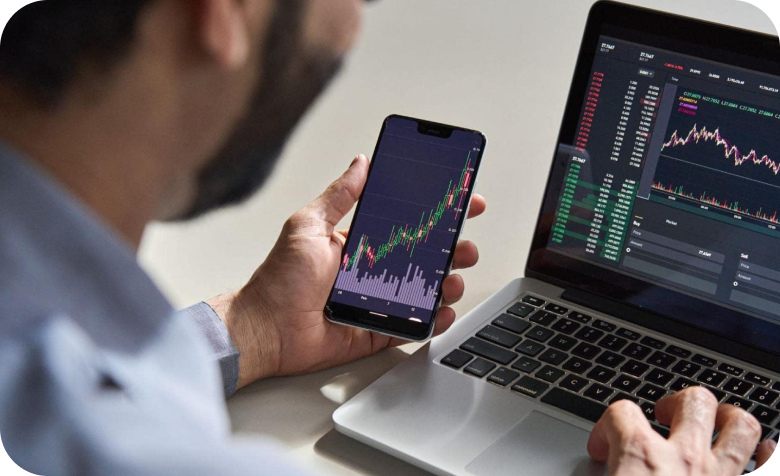- Education
- Forex Technical Analysis
- Technical Indicators
- Trend Indicators
- Moving Average
Moving Average Explained - What Is Moving Average
How to Use Moving Average
Generally moving average curves analysis includes the following principles:
- Direction of moving average curve reflects prevailing trend over a period;
- Low-period averaging may give more false signals, while large-period averaging tend to be lagging;
- To increase (decrease) sensitivity of the curve one should decrease (increase) the period of averaging;
- Average curves are more useful in trending environment.
Comparing moving average with price movements:
- A strong buy (sell) signal arise if price crosses from below (from above) its rising (falling) moving average curve;
- A weak buy (sell) signal arise if price crosses from below (from above) its falling (rising) moving average curve.
Comparing moving average curves of different periods:
- A rising (falling) lower-period curve crossing from below (above) another rising (falling) longer-period curve gives a strong buy (sell) signal;
- A rising (falling) lower-period curve crossing from below (above) another falling (rising) longer-period curve gives a weak buy (sell) signal.

Moving Average (MA) Indicator
Moving Average Trading Strategy
Moving average strategy is essentially a trend following means. Its objective is to signal the beginning of a new trend or a trend reversal. Herein, its main purpose is to track the progress of the trend and not to predict market action in the same sense that technical analysis attempts to do. By its nature, Moving Average is a follower; it follows the market telling that a new trend has begun or reversed only after the fact.
Moving Average Formula (Calculation)
The calculation of the simple moving average is done through the method of calculating the average price over a given period of time.
SMA = Sum (Close (i), N) / N, where: Close (i) – current close price; N – period of averaging.
The calculation of the exponential moving average is done by taking into account the prices of the previous period:
EMA(t) = EMA(t-1) + (K x [Close(t) – EMA(t-1)]), where: t – current period;
K = 2 / (N + 1), N – period of averaging.
How to use Moving Average in trading platform
Forex Indicators FAQ
What is a Forex Indicator?
Forex technical analysis indicators are regularly used by traders to predict price movements in the Foreign Exchange market and thus increase the likelihood of making money in the Forex market. Forex indicators actually take into account the price and volume of a particular trading instrument for further market forecasting.
What are the Best Technical Indicators?
Technical analysis, which is often included in various trading strategies, cannot be considered separately from technical indicators. Some indicators are rarely used, while others are almost irreplaceable for many traders. We highlighted 5 the most popular technical analysis indicators: Moving average (MA), Exponential moving average (EMA), Stochastic oscillator, Bollinger bands, Moving average convergence divergence (MACD).
How to Use Technical Indicators?
Trading strategies usually require multiple technical analysis indicators to increase forecast accuracy. Lagging technical indicators show past trends, while leading indicators predict upcoming moves. When selecting trading indicators, also consider different types of charting tools, such as volume, momentum, volatility and trend indicators.
Do Indicators Work in Forex?
There are 2 types of indicators: lagging and leading. Lagging indicators base on past movements and market reversals, and are more effective when markets are trending strongly. Leading indicators try to predict the price moves and reversals in the future, they are used commonly in range trading, and since they produce many false signals, they are not suitable for trend trading.
Use indicators after downloading one of the trading platforms, offered by IFC Markets.

Not sure about your Forex skills level?
Take a Test and We Will Help You With The Rest


